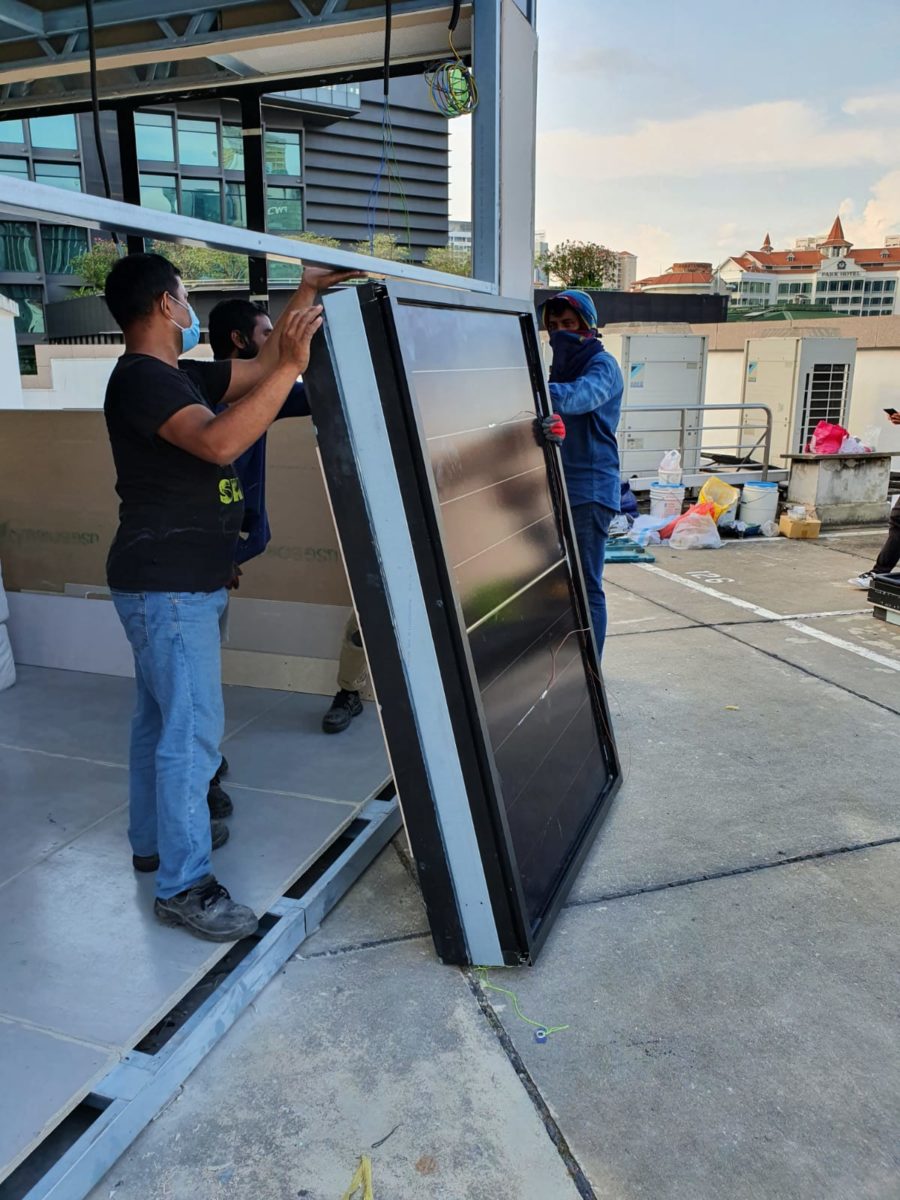A group of scientists from the National University of Singapore (NUS) has developed a prefabricated BIPV wall for applications in tall buildings.
“It is an open construction system, which can be adapted to all kinds of building, as well as integrate with other building components such as windows and doors,” researcher Tianyi Chen told pv magazine. “It is applicable to tall residential façades, which have a large proportion of opaque walls, especially on the western and eastern sides.”
The researchers described the system as a prefabricated, opaque, multi-layered BIPV wall. They said it offers the advantage of reducing safety risks associated with working at height on-site, along with low costs, high-performance electricity production, and fast construction.
“It also avoids exposing PV components to unfavorable weather conditions for long periods during the construction process,” said the researchers.
The plug-and-play system has a light-gauge steel structure and a male and female joint equipped with rubber tape to prevent air and rainwater penetration at the wall connection. The proposed system configuration can be installed on site, without scaffolding or mobile elevating work platforms.
“The new system ensures the high performance of PV by using a first-generation silicon-based PV module and module-level power electronic (MLPE) and by using the multi-layer wall material to create a ventilated air cavity between the PV and the main structure so that excess heat from the PV can be dissipated as quickly as possible,” said the group. “The insulation layer ensures a good thermal condition for the interior.”
Chen said the cost is about SGD 340 ($242) per square meter, including SGD 75 per square meter for the PV panels.
“The unit can generate 87.5 kWh per year per square meter and, with current electricity tariffs in Singapore, offers a payback time of roughly 13 years,” said Chen.
They presented the system in “A novel design approach to prefabricated BIPV walls for multi-storey buildings,” which was recently published in the Journal of Building Engineering.
“This solution is suitable for large public buildings if the mega panel is within the limits of the crane payload and meets the transportation logistics,” the researchers concluded. “An architect can decide the arrangement and size of the windows on the mega panel as well as the combination of material and PV modules required to meet the design needs.”
The research group includes scientists from Singapore's Solar Energy Research Institute (SERIS).
This content is protected by copyright and may not be reused. If you want to cooperate with us and would like to reuse some of our content, please contact: editors@pv-magazine.com.




1 comment
By submitting this form you agree to pv magazine using your data for the purposes of publishing your comment.
Your personal data will only be disclosed or otherwise transmitted to third parties for the purposes of spam filtering or if this is necessary for technical maintenance of the website. Any other transfer to third parties will not take place unless this is justified on the basis of applicable data protection regulations or if pv magazine is legally obliged to do so.
You may revoke this consent at any time with effect for the future, in which case your personal data will be deleted immediately. Otherwise, your data will be deleted if pv magazine has processed your request or the purpose of data storage is fulfilled.
Further information on data privacy can be found in our Data Protection Policy.